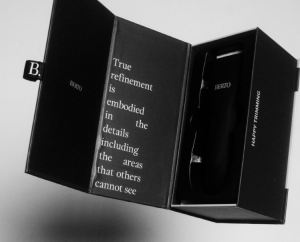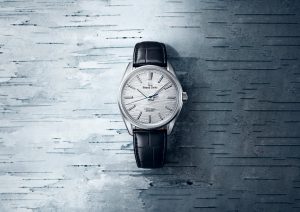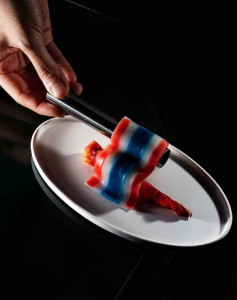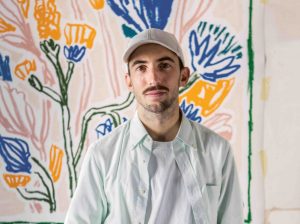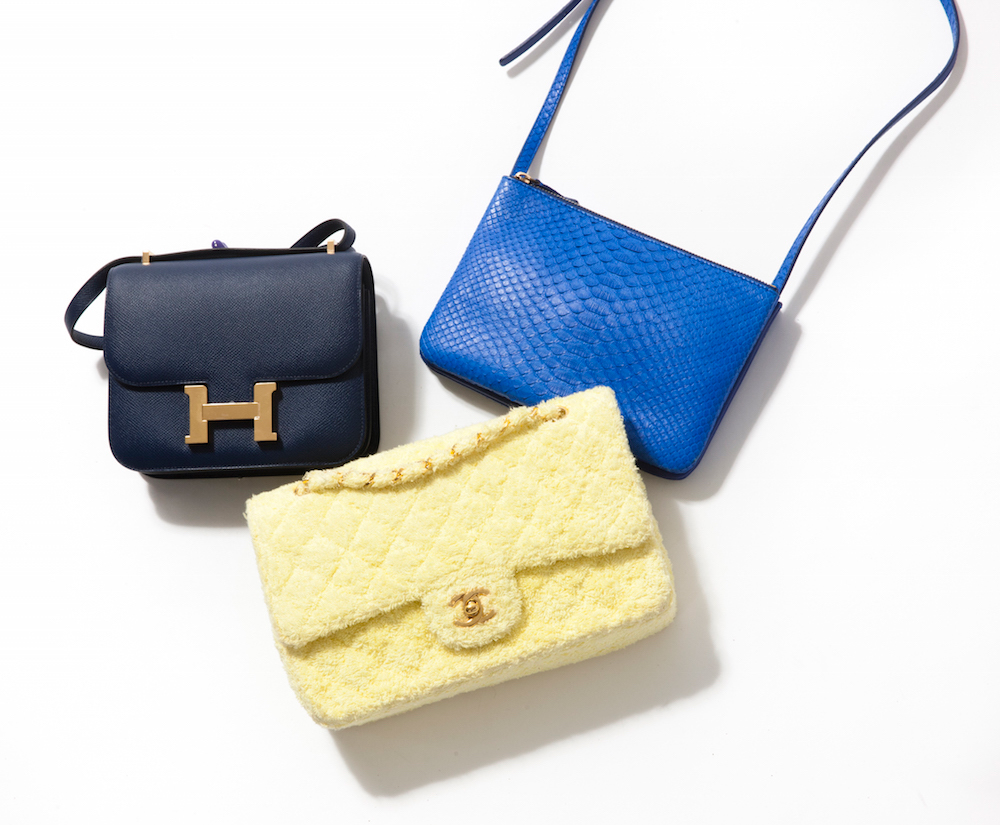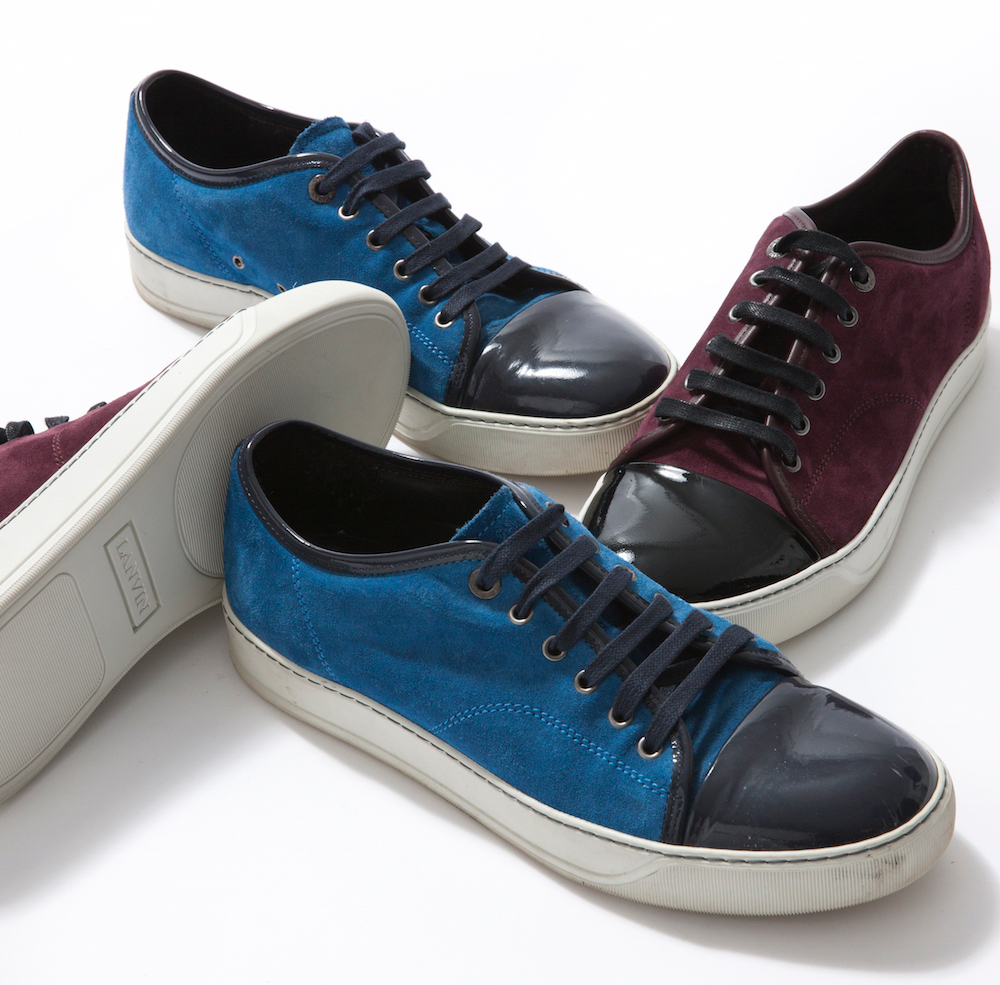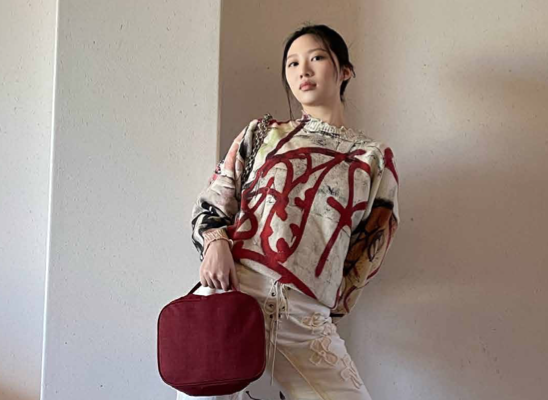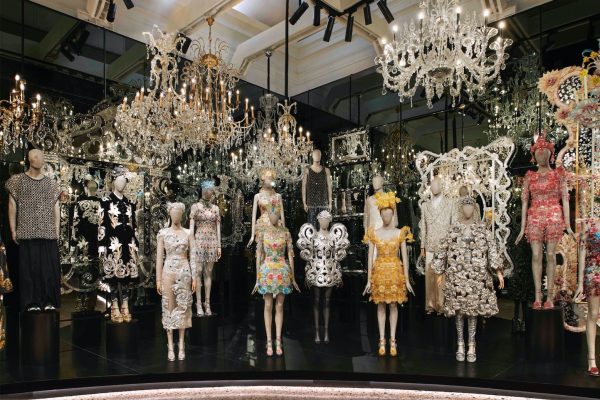#style / #fashion
Shopaholism And Sustainability: An Interview With Vestiaire Collective’s Fanny Moizant
BY Kieran Ho
July 11, 2017
Vestiaire Collection trumps the online second hand luxury market, with a staggering 6 million users worldwide. We will soon feel a new surge of electricity to the used luxury goods market, as the brand is set to open an office in Hong Kong later this year. Fashion Editor Kieran Ho speaks with Fanny Moizant, co-founder of Vestiaire Collective about shopaholism, the future of sustainability in fashion, and the most expensive bag sold online.
K: We all know how your brand started, but I want to hear it from your mouth.
Actually, my fellow partners and myself had the same ideas at the same time without knowing each other. We all come from different backgrounds. Two of them were opening their wardrobes and seeing there were so many great pieces that they didn’t know how to wear and wanted to do something with them. Then we all got connected.
K: Was it like the byproducts of a shopaholic?
F: Yes. Exactly. One was a guy and his wife had stuff all over the place and had no space for it.
K: And you, yourself, were you a shopaholic?
F: No. At the time, I just had my two babies. I just really wanted to have my own company, I was coming from an entrepreneurial family. The fashion consumption has changed from possession to usage. At the time there was a lot of press articles about this generation of recessionistas (it was at the heart of the recession). I kind of spotted that those girls were starting to resell, at the time it was on their blogs, and I found it quite interesting but it was a nightmare because you had to send checks, emails etc. My idea was to bring all those girls together on one platform.
K: But you said the idea of reselling and getting rid of excess luxury came from your partner, because you weren’t the shopaholic.
F: Actually I have a very small wardrobe, very small, I kind of wear a uniform every day and live out of my denim jeans.
K: So what are your staple pieces? I respect somebody that can curate their wardrobe, because that means their life is so put together and they know exactly what they want.
F: When I arrived in London, the girl from the first magazine who did a profile piece on myself, she asked me to open my wardrobe. She saw what was inside then asked, “Where are the other closets!? I’m sure you have something else that you’re not showing.” When I told her everything was there, she was, like, shocked. Because everything is so edited.
K: It’s like the opposite of what the industry would stereotype you to be!
F: I’m more interested in the business aspect, while my partners were more on the buyer’s side so THEY were the hoarders! Every time I want to buy something, I’m always selling something before. My uniform is a pair of jeans, a knitwear or blouse, a nice pair of shoes, and maybe some accessories, and that’s it. It has to be practical. I’m definitely not a fashionista, I’m on the conscious side of fashion. I like beautiful things without spending fortunes.
K: You said conscious, how do you feel about sustainability? That’s always a big topic, is your company an answer to the wastage?
F: It is, but we’ve made the choice from day one not to market that. We didn’t want to rub it in people’s faces saying, “Hey! Hey! Hey! We are a sustainable company!” Because, again, that was too fabricated for us. We are a part of the industry to bring sustainability in this “see now, but now” movement. This crazy pace of fashion where we constantly need the next thing; it’s usage over possession. I think by giving a second, third, or even fourth life to a product, you’re already bringing that sustainability element. The definition of luxury is products that hold their value across time for their consumer, and our goal is to allow these products to be enjoyed by different users throughout their lifetime.
K: Do you think we should buy new and support the manufacturing of more products? Or slow down production and just live with what we have already, because there are finite resources.
F: Let’s be honest, it’s not black or white. Of course we all enjoy something new, because that supports creativity, and our industry thrives on fresh talent. We need to also allow that creativity and talent to be enjoyed by a wider range of people, because luxury isn’t accessible to everyone. When you buy a car, do you want to buy it new or used? You have that option, and that’s completely normal. That should also be standardized for fashion; that conscious decision.
K: How much of what you buy is new? And how much is used?
F: I would say half and half. I enjoy a new fashion piece from the current season, but I wouldn’t say I’m a “trendy” person. The way I like to dress, the way French girls like to dress, is to start with a decent wardrobe of basics. A white shirt, the perfect pair of trousers, then play around with a few strong pieces that come and go, it doesn’t always have to be the game of trends. Yesterday I was reading a quote that said, “Trendy is the last stage before tacky.” Less is more!
K: Vestiaire Collective stocks both menswear and womenswear. Do you think there is gender fluidity in products? For example, the Birkin is traditionally designed for women, but thanks to online platforms, more men are buying them because they don’t have to face the presumptions or judgement received when they walk into the store. When the Loewe puzzle bag was introduced, it was only for women, now, they have it in the men’s section too at JOYCE.
F: I’ve never thought about that, I wouldn’t say it’s the products that are different now, its men’s mentality evolving. More men are embracing that kind of fashion savvy behavior. We tend to mix everything; we’re blurring the boundaries.
K: For a woman to borrow pieces from their boyfriend’s wardrobe is very chic, but for a man to borrow his girlfriend’s dress is a bit…
F: A dress, maybe not! Perhaps a beautiful bag or accessories…
K: Do you have an ideal Vestiaire Collective woman? Who buys your products?
F: It’s a wide range, it starts from the young student who wants to afford their very first designer bag, but they can’t afford new, to the older woman who is an Hermès collector.
K: When you first started, who did you want to be buying your pieces?
F: Our friends. Part of our success is because the founders are a group of likeminded people. We stay true to ourselves and are consistent with who we are and what we want to achieve. We want our customers to be an extension of that.
K: How do you source some of your first pieces for the shop?
F: Our friends. At the very beginning it was more like a consignment. We told our friends to go look in their wardrobes for pieces they no longer wear and lend us those pieces. It started so genuinely, and grew from word of mouth.
K: The problem with the Chinese market is they mainly want to buy new products
F: I just had this conversation yesterday, it’s a big challenge for us. We were told in the Chinese culture, it’s thought of as bad karma to buy secondhand. In western countries, they’re more willing to embrace that new mentality.
K: Is that why it took you so long to come to Asia?
F: No, it’s because we are just learning how to walk. The website is open internationally, we have about 10,000 members in Hong Kong, but only from the buying side, we don’t have sellers in Hong Kong yet.
K: What is the selling process like?
F: First you take photos of the item, and put it up on the site with a description, and it stays with you. Once it is sold, you ship it to us, and is goes through our quality control and authentication process before we send it to the buyer. We also offer a VIP service where we can come to your home, clear your closet, take the photos and do the listing for you.
K: How many authenticators do you have?
F: We have a team of about 20 quality controllers and authenticators in Paris. In New York, we have about 5 people, and it’s a growing team.
K: How do you hire these people?
F: We hire people who are from auction houses because they have that experience. Also people from the luxury houses, because they are very familiar with the products, we just give them authentication training.
K: What is the most expensive item you ever sold?
F: 80,000 euros, a green crocodile Birkin going from Italy to Germany. But currently, we have a bright pink Birkin with sapphires on the hardware, for slightly under 200,000 euros.
Transcription by Keefe Tiu





